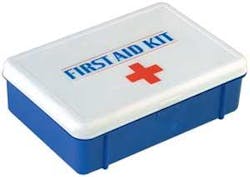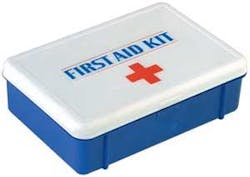Workers’ compensation and declines in claim frequency
By Frank Pennachio
Astartling 69% of injuries and illnesses may never make it into the BLS Survey of Occupational Injuries and Illnesses (SOII), the nation’s annual workplace safety and health “report card.” The chronic and even gross underreporting of work-related injuries is among the most troubling conclusions in “Hidden Tragedy: Underreporting of Workplace Injuries and Illnesses,” a majority staff report by the Committee on Education and Labor, U.S. House of Representatives.
These findings have profound implications for Workers’ Compensation. For more than a decade, declining claims frequency has been celebrated as a major force in reining in the costs of Workers’ Compensation. While the economic shift from manufacturing to services reduced injury exposure, stepped-up injury prevention efforts by employers and increased awareness of the benefits of expeditiously returning injured employees to work were heralded as major contributors to the declining rates.
Underreporting, however, distorts the factual basis and casts serious doubt on the validity of the data that drives decision-making. Annual reports of dramatic declines in claims frequency for the past decade have lulled employers into a false sense of security: We’re doing an outstanding job by consistently lowering the incidence of injuries and illnesses; our programs are working, and we have properly allocated our resources on preventive health and safety measures. Contrarily, “Hidden Tragedy” concludes that the “SOII cannot be trusted as a gauge of the safety of American workplaces.”
There are many reasons for underreporting and some, such as the exclusion of public employees and lack of understanding of reporting requirements, can be addressed with improved recordkeeping and training. Others such as occupational illnesses that have a long latency period (time between exposure and disease) are more difficult and will require investment in comprehensive health data collection systems. Yet, the one that is most worrisome is that both employers and employees underreport injuries and illnesses, compelled by economic or peer pressures.
Recognizing that OSHA relies on self-reporting, employers face strong incentives to underreport. Increasingly, injury and illness rates are used as evaluation criteria in the award of government and private contracts and bonuses; lower rates improve a bidder’s chances. Businesses with fewer injuries are less likely to be inspected by OSHA, will have lower Experience Mods, and will look better to stockholders and consumers.
Furthermore, it is likely the level of underreporting is indicative of the employer’s safety culture and affects an employee’s willingness to report an injury. There are many reasons an employee might decide not to file a claim, ranging from fear of reprisal and peer pressure to a lack of understanding of the compensation system. Sometimes there is the belief that the injury is not work-related. Nevertheless, it is clear that the employer’s behavior is a key determinant in a worker’s decision to file.
Widespread reports of employee harassment and intimidation are cited in the report, including a heart wrenching account in the Charlotte Observer about poultry workers who were disciplined, harassed, and fired for reporting injuries. Other tactics used to discourage reporting include bringing seriously injured workers right back to work to avoid lost work time and discouraging appropriate medical care, including pressuring physicians, to avoid a treatment plan that precipitates an OSHA recordable injury.
The problem is even more complex for immigrant workers who face language barriers, as well as fear of job loss or deportation if undocumented. Although the death rate among Hispanics in construction is much higher than that for the rest of the industry, the work-related injury rate is lower. This trend defies logic; however, it reflects the fact that fatalities are difficult to hide.
Whereas a moral appeal may not dissuade employers who habitually underreport and abuse the system, employers should be compelled by the economic hazard in underreporting. In many ways, the practice is a disaster waiting to happen, akin to the perverse logic that drove the subprime mortgage collapse.
One of the overarching principles of Workers’ Comp cost control is early reporting and intervention. The definitive study, prepared by the Hartford Financial Services Group, found that injuries reported between the fourth and fifth week following an injury are 45% more expensive than those reported in the first week. Moreover, delayed reporting significantly increases the likelihood of litigations, further compounding the costs.
As a case in point, studies have also found significant underreporting in musculoskeletal disorders (MSDs), the common “soft tissue” workplace injury. Yet the probability of reporting increases with the severity of the condition. As the injury remains untreated, it becomes unbearable, a claim is filed, treatment is extensive, and the costs exorbitant. It simply does not pay to underreport. One late report can cost significantly more than five timely reports.
Current data reveals that the costs and severity of claims are rising. While there are many reasons for the rising costs, it’s easy to postulate that underreporting can be a contributing factor. The right medical attention, delivered most expeditiously, is the best way to help employees recover faster and, ultimately, is the most economically sound approach for employers.
Not all employers are guilty of willful underreporting. Even in companies where management takes a constructive, proactive approach to injury prevention, their actions may unwittingly discourage reporting. Employers often provide monetary incentives (safety bonus and award programs) to workers to increase safety awareness on the job and reduce workplace injuries and illnesses.
When the program significantly rewards a reduction in or zero recordable injuries, the focus becomes the reward rather than safety. Workers who incur injuries may suffer pejorative and disparaging treatment from peers or supervisors when they jeopardize the reward or bonus.
To counteract this problem, employers must evaluate what they are measuring and rewarding. Identifying close calls and taking corrective action, time lags in reporting, disability duration and treatment conforming to evidence-based guidelines, equipment maintenance, training, and supervisor support and implementation of carefully structured return-to-work programs are better benchmarks.
Responsible employers are guided by injury and illness statistics in designing and implementing workplace health and safety programs, and if employers are not fully aware of the events that occur in their workplace, preventive efforts become less of a priority. Supervisors need to be held accountable and rewarded for accurate recordkeeping and prompt injury reporting. Turn the no-report culture on its head to “If you get hurt, we want to know immediately.”
There is little doubt that the current method of reporting is flawed. We don’t really know what is happening with workplace injury trends, but we do know that the trends are not as good as they seem. Over the long term we can work for improvements in the reliability and source of data. Yet, our most important task is to convey that the biggest threat of underreporting is really to the economic health of the employer.
Frank Pennachio, CWCA, is cofounder and Director of Learning at the Institute of WorkComp Professionals, Asheville, NC, the largest network of Workers’ Compensation professionals in the nation. He is also president of a Workers’ Compensation insurance agency, and a licensee and trainer for Injury Management Partners. A well-known speaker, his articles appear regularly in business and trade associations. He can be contacted at [email protected].

